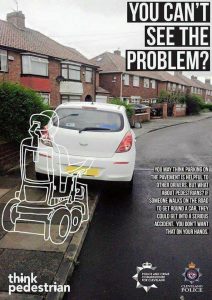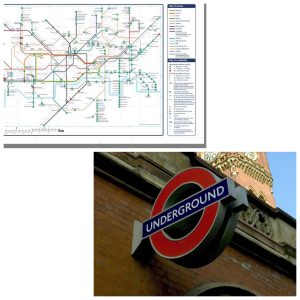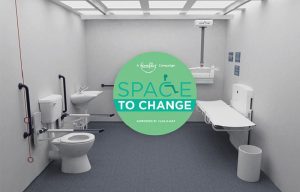
Doug Paulley may have helped change the culture but the Supreme Court’s ruling on access to public buses doesn’t seem to have changed much……
Hail Doug Paulley’s cultural change but is the recent Supreme Court judgement really a win ?
In January this year I put together this blog piece for one of sites I occasionally write for and after having recently just been left sitting at a bus stop again because to be frank the hassle of taking on a parent with an intractable attitude and a fixed frame buggy and a driver who honestly looked like he wanted to be beamed up out of there quicker than Scotty ever was on the Star Ship Enterprise – well – I just wondered if anyone thinks the last five months have produced anything new for those who need to use the wheelchair space on our buses ?
Heres how I saw it earlier in the year, just after the Supreme Court ruling.
So, almost five years since he missed his lunch date with his Mum and Dad after being unable to board a bus thanks to the refusal of a buggy owner to move from the wheelchair space, Doug Paulley has his Supreme Court ruling. It was, we were told, a “win” and Doug deserves real credit for perseverance, commitment and guts to take on a multi national in defence of disabled people’s right to reasonable access on public transport.
But sadly I can’t see what’s really changed with this ruling ? Bus drivers may now need to try harder to “persuade” a parent to shift their buggy from the wheelchair space. Bus companies will, apparently, have to train them to be more persuasive. Yet the reality is that if your one of what in fairness I see as a small number of angry, intransigent buggy owners who refuse to disassemble their sometimes all-terrain armoured buggy, you ain’t going to be moved by this ruling.
So what happens next then ? Does this ruling honestly mean that bus drivers will, having failed to cleverly and genuinely persuade a buggy person to move, simply down tools and refuse to shift the bus until the stubborn, or uncaring, or just plain selfish parent sees sense and vacates the wheelchair space ? I suspect not a lot will happen differently to now.
This ruling may mean a longer pause at the stop whilst the harassed driver, now fully trained in the art of gentle persuasion, “requires by law” the parent to leave the wheelchair space. The ruling may increase awareness of the crucial importance to wheelchair users of their one and only means to travel on a bus. So drivers might, and let’s emphasise that might, feel emboldened and push harder for the buggy user to shift. Fewer of the stubborn minority might be, well, stubborn and actually leave the wheelchair space.
But here’s the thing, the ruling is clear, the driver cannot absolutely compel the buggy owner to move and cannot force them off the bus. Such action would to me be uncomfortable and embarrassing, albeit I’d get to travel. Put simply, though you wouldn’t want to see the law actioned in such a manner, without that final legal standing there’s just no teeth to this Supreme Court ruling.
All of which takes no account of the wheelchair users’ frequently desperate and even embarrassed attempt to avoid being the centre of bus user discontent or make life hard for bus drivers who, incidentally, are mostly only too willing to jump out of their cab and drop the ramp, despite what you might read in some places.
What we actually needed was a legal ruling ten years ago to compel all bus companies to provide two multi use spaces on buses, one primarily for wheelchair users and one normally for buggy folk. This way the chances of driver led conflict resolution being remotely necessary become vastly reduced, and the multi use design, albeit with disabled priority remaining, ensures a huge reduction in the times disabled people are left at bus stops. I know, once is too many, and I’m personally impacted by this, but my sense is that without this design requirement there honestly is NO way we will ever see a reasonable resolution here.
Even now a new law around the two space provision on newly built buses would be the real victory, this practical measure which, when coupled with the Supreme Courts ruling, would deliver a true leap in anti discrimination on public transport and at a stroke hugely increase the ability to travel on our public bus services for tens of thousands of disabled people.
Bus companies may not want this design imperative as it means thinking again about the existing design of many buses where single wheelchair space is the norm, as on some large double decker buses and frequently, their cousins, the small commuter style bus. The excuses around cost surely won’t stand up once the evidence of usage shows that the loss of seats is no hardship apart from a tiny percentage of journeys at peak times, even in places like central London currently consulting on reducing bus numbers on some routes.
Doug Paulley’s longest wait ever for a bus may bring some small but welcome measure of relief to the problem of getting left in the rain at the bus stop. We should hail his determination and accept his analysis around the cultural change that the ruling can deliver.
But my gut feeling is that little has happened here to change the reality, which is that drivers can struggle to get buggy users to do the decent thing and shift from the space, but let’s be clear, most parents and their buggies will continue to try to move or even fold things up to allow a wheelchair user the priority space they genuinely need. However, without a fit for purpose design on buses that delivers two not one space, on every vehicle, some buggy users will continue to look the other way and bus drivers will still be faced with an impossible situation where ultimately the buggy is the only winner.
Read the Guardian online’ take on this Supreme Court ruling from January 2017, honestly, has much changed ?
http://ow.ly/CJaR30891HJ
Mark Wilson








